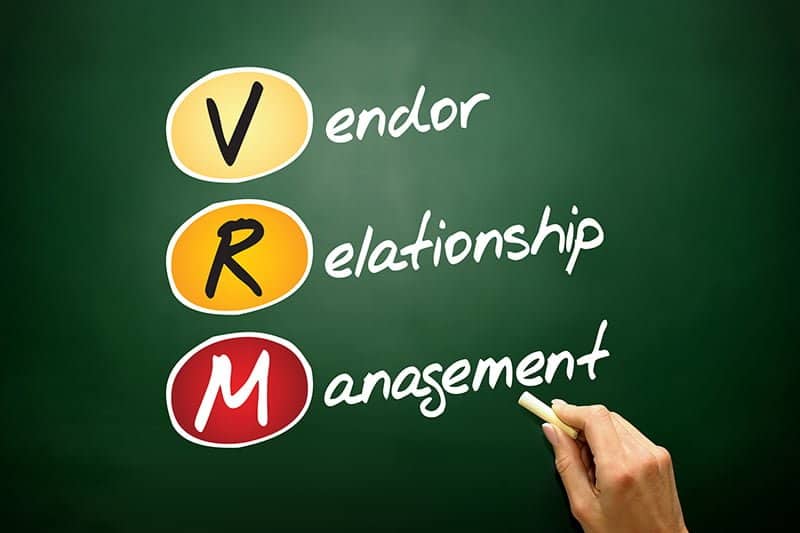Addressing the challenges with an ITSM system
Today, the number of service vendors per company keeps increasing. This may be stimulated either by the need to reduce the number of in-house IT support staff through outsourcing several IT functions (e.g. maintenance of the ERP or the customer portal), or by the desire to provide service diversity, flexibility and cost savings demanded by end customers.
Table of Contents
ToggleWhether vendor services are for internal staff or end customers, their quality influences the company’s operations, revenue, and brand reputation. Along with the growing number of vendors, vendor performance management becomes more complex, bringing the challenges of its effective organization. An ITSM platform seems to be a capable tool to handle these challenges.

Challenge 1: Vendor data is diffused, with no single view of a vendor relationship
As interactions with vendors involve a range of employees, the data on vendors’ performance ends up scattered across systems and the staff’s records. Say, a company outsources maintenance of their CRM system. While the vendor manager is aware of contracts and vendor details, the financial department knows vendorship costs and CRM users evaluate the service quality and the system’s performance. So, the first challenge of vendor performance analysis is bringing together all the variables (vendorship costs, SLA compliance, performance KPIs, etc.) so as to get a full picture of vendor relations.
How an ITSM system helps
An ITSM-based application provides a framework for managing vendors and tracking their performance. This helps to establish and automate the assessment process, store valuable data (e.g. contracts, agreement details, operations, vendor assets and activities), analyze and clearly display vendors’ data. Such an application can contain dedicated dashboards per vendor that aggregate all vendor-related data in a single place. Then, the available vendor information can be
(a) manually input by users with respect to their roles (e.g. contract details, vendor tier)
(b) automatically retrieved from other ITSM applications (e.g. data on related incidents, problems, requests, or assets)
(c) automatically gathered from other systems of the enterprise (e.g. vendorship costs from the accounting system)
As a result, with a comprehensive view of vendor data, managers can focus on its analysis, taking more informed decisions on vendors.
Challenge 2: SLA fulfilment is assessed with no real-time visibility
Service level agreements (SLAs) seal mutual commitments between service vendors and the company. In quantitative terms, the commitments come as metrics for measuring vendor service performance. That said, it becomes a daunting and time-consuming task to calculate SLA fulfillment for multiple vendors providing diverse services, all with different SLAs. This implies putting together contract details and sparse data on every service issue. The task gets even more complicated if a company wants to get a holistic picture of vendor performance over time. For this, SLA fulfillment should be tracked continuously rather than periodically.
How an ITSM system helps
An ITSM-based application for vendor performance management can allow linking contracts with SLA metrics, vendor-related incidents or requests, and vendor performance data, either gathered automatically or entered by in-house IT specialists. Certain data collecting issues can be addressed by building integration solutions. This helps to automate SLA calculation based on vendors’ activities. SLA reports and visualizations make it much easier to observe trends in breached and achieved SLAs, as well as to compare similar vendors based on SLA fulfilment.
Challenge 3: SLA fulfillment is clear, but business impact stays undefined
Though SLA is key in vendor relations, the achievement of SLA targets appears insufficient to fully understand vendors’ performance in real time. It also makes sense to track vendors’ activity with respect to open, resolved and reopened service issues. In terms of an IT department’s actions, this means sorting and accumulating relevant data about incidents and problems related to particular vendors. With dozens of vendors and incidents, this becomes a truly demanding task.
In addition, vendors usually lack accountability for final business outcomes. Even slight SLA breaches can affect the quality of the company’s products and end customers’ satisfaction. Likewise, they indirectly impact a range of business workflows, which usually stays invisible for a certain time.
For example, for a company’s telemarketing department, a network service downtime results in (a) sales team’s inactivity during their paid hours and (b) losses in sales opportunities. In 2011, an 11-day reservation desk downtime caused Virgin Blue up to $20 million lost in profit.
For sure, not every service outage has such considerable outcomes. Still, an instant understanding of how service interruptions impact the company’s business is a solid basis for objective feedback to vendors and vendors’ higher accountability for the delivered services. The question is, how to quickly estimate the outcomes of service downtimes in terms of the company’s operations and revenue?
How an ITSM system helps
An ITSM system provides capabilities to in-build KPIs and metrics for measuring vendors’ activities. Such metrics can help to analyze the number and priority of incidents and problems related to vendor services, as well as their reopening and timely resolution.
A configuration management database (CMDB) within the ITSM system stores the data on interconnections between IT infrastructure elements and levels of their impact on particular workflows. In its turn, a vendor performance application can use this information to assess financial and operational effects of service outages.
Based on estimated legal and business outcomes, you can predefine the downtime cost per minute, and then an ITSM application will calculate a total score by incorporating data on service outages. With real-time calculation of metrics, automatic email notifications, and rules for penalties and credits for an inadequate service quality, a company can raise vendors’ accountability for the delivered services.
Stay tuned for the Part 2 of this series to learn how to address two more challenges of vendor performance management with an ITSM system and what changes such a solution can bring to the work of in-house IT specialists.





